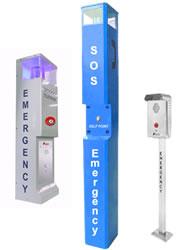Facilities Management Best Practices Guide| 10 Tips for Success
Discover top 10 facilities management best practices for optimizing efficiency, productivity, and well-being in your organization. Elevate your workspace today!
Facilities Management Best Practices: Creating Efficient and Productive Environments
In the dynamic landscape of contemporary business, facilities management best practices have evolved from simple maintenance to a strategic endeavor that profoundly impacts an organization’s success. By meticulously managing physical assets, infrastructure, and resources, facilities management optimizes operational efficiency, employee productivity, and the overall bottom line.
Defining Facilities Management
Facilities management is a holistic discipline encompassing an array of activities aimed at ensuring the optimal functionality of an organization’s physical environment. This goes beyond mere maintenance; it involves aligning the physical workspace with the strategic objectives of the business and prioritizing the well-being of its occupants.
The multifaceted nature of facilities management includes coordinating functions such as maintenance, space utilization, security, compliance with health and safety regulations, energy management, and more. The overarching goal is to curate an environment that not only enhances employee satisfaction but also propels organizational efficiency.
Cost Saving Tip “Switching Your Existing Conventional Phone Landlines to Cellular”
Elevator Phones | Area of Refuse Phones | Campus Emergency Phones
MyLinkLine’s cellular technology introduces a forward-thinking approach to emergency communication.
Cut the cord on conventional phone lines and save 35% or more on monthly phone line fees. Our fixed cellular landline is easy to install and works with all telephones and monitoring services.
Traditional landlines are going away and you can count on the reliability of cellular elevator phone lines to maintain a communication path between your emergency phones and your monitoring service.

1. Strategic Planning
At the heart of effective facilities management best practices lies strategic planning. It entails aligning the facilities management strategy with the overarching business objectives of the organization. This process involves delving deep into the organization’s mission, vision, and values to craft a facilities management plan that resonates with these foundational elements.
A meticulously designed strategy provides a roadmap that guides decision-making, resource allocation, and the achievement of short-term and long-term goals. For instance, a technology company aiming to foster innovation might design flexible workspaces that encourage collaboration and brainstorming.
2. Data-Driven Decision Making
In the era of data, effective facilities management heavily relies on data analytics to drive well-informed decisions. Organizations harness data to gain insights into energy consumption patterns, space utilization rates, maintenance schedules, and more. For example, a retail chain might analyze foot traffic data to optimize store layouts, enhancing customer flow and maximizing sales.
By leveraging data, organizations unearth areas for enhancement, predict maintenance requirements, and allocate resources judiciously. This results in proactive decision-making that forestalls potential disruptions.
3. Preventive Maintenance
The adage “prevention is better than cure” holds true in facilities management. Adopting a preventive maintenance approach involves conducting regular inspections and upkeep tasks to identify and rectify issues before they escalate. This practice extends the lifespan of assets, diminishes unexpected downtimes, and mitigates associated costs.
For instance, a manufacturing plant might schedule routine equipment inspections to detect signs of wear and tear and replace components proactively, averting production halts.
4. Space Utilization
Effective space management transcends arranging furniture. It delves into understanding how diverse spaces are utilized, optimizing layouts for maximum productivity, and ensuring that the physical workspace aligns harmoniously with employee needs.
Incorporating versatile workspaces that cater to various tasks and collaboration styles fosters creativity and teamwork. For instance, a forward-thinking law firm might integrate quiet zones for focused work alongside open areas for team discussions, accommodating different work modes.
5. Sustainability Initiatives
Sustainability has transcended the status of buzzword to become a pivotal facet of modern facilities management. Organizations are under increasing pressure to reduce their ecological footprint. Facilities managers spearhead initiatives encompassing energy-efficient technologies, waste reduction strategies, and eco-friendly building materials.
These endeavors yield not only a positive corporate image but also long-term cost savings. For example, a hotel chain might install solar panels and energy-efficient lighting, reducing energy expenses while showcasing a commitment to sustainability.
6. Health and Safety Compliance
A secure and healthy workplace is non-negotiable. Facilities managers remain attuned to pertinent health and safety regulations and ensure strict adherence. This entails ensuring proper ventilation, optimal lighting, ergonomic furniture, and comprehensive emergency evacuation plans.
Prioritizing health and safety not only safeguards employees but also mitigates legal and financial liabilities. A pharmaceutical manufacturing plant, for example, adheres to stringent safety protocols to ensure the well-being of its workforce and the integrity of its operations.
7. Technology Integration
Technology serves as a lodestar in modern facilities management. Building automation systems, sensors, and Internet of Things (IoT) devices facilitate real-time monitoring of parameters like temperature, humidity, and occupancy.
This data is harnessed to optimize energy usage, detect maintenance issues early, and craft a congenial environment for occupants. An office complex might employ smart lighting systems that adjust brightness based on natural light availability, leading to energy conservation.
8. Vendor Management
Many organizations enlist external vendors for services such as maintenance, cleaning, and security. Effective vendor management encompasses careful vendor selection, articulation of expectations, and periodic evaluation of performance. Open communication and well-defined contracts guarantee quality services aligned with organizational requirements.
For instance, a university might collaborate with a janitorial services provider to ensure that the campus remains pristine and conducive to learning.
9. Continuity Planning
Disruptions are an inevitable facet of business operations. Facilities managers cultivate continuity plans detailing strategies for maintaining essential operations during disruptions. This might encompass backup power systems, provisions for remote work, and disaster recovery protocols. A financial institution, for example, ensures the availability of backup servers and data recovery mechanisms to safeguard critical financial transactions.
10. Employee Engagement
At the nucleus of any organization lies its employees, and their contentment profoundly influences productivity. Facilities managers actively solicit employee feedback regarding the work environment. This could involve surveys, focus groups, or suggestion mechanisms.
Addressing employee concerns and preferences nurtures a sense of ownership and augments overall satisfaction. A tech startup, for instance, might involve employees in the design of communal spaces, ensuring that the workplace aligns seamlessly with their needs.
Conclusion
In the vanguard of modern business, facilities management best practices encapsulate a tapestry of responsibilities far exceeding conventional maintenance. It’s a harmonious blend of strategic planning, data-driven insights, preventive maintenance, sustainability initiatives, and employee engagement. By embracing these best practices, organizations unlock the latent potential of their physical assets and forge environments that breed efficiency, innovation, and well-being.
As technology advances and workplaces evolve, the pivotal role of facilities management in underpinning efficiency and productivity remains steadfast. Investing in these practices isn’t just a prudent strategy; it’s a transformative force that propels organizations toward sustained success in an ever-changing landscape. For additional support we recommend IFMA The world’s largest and most widely recognized international association for facility management professionals.

